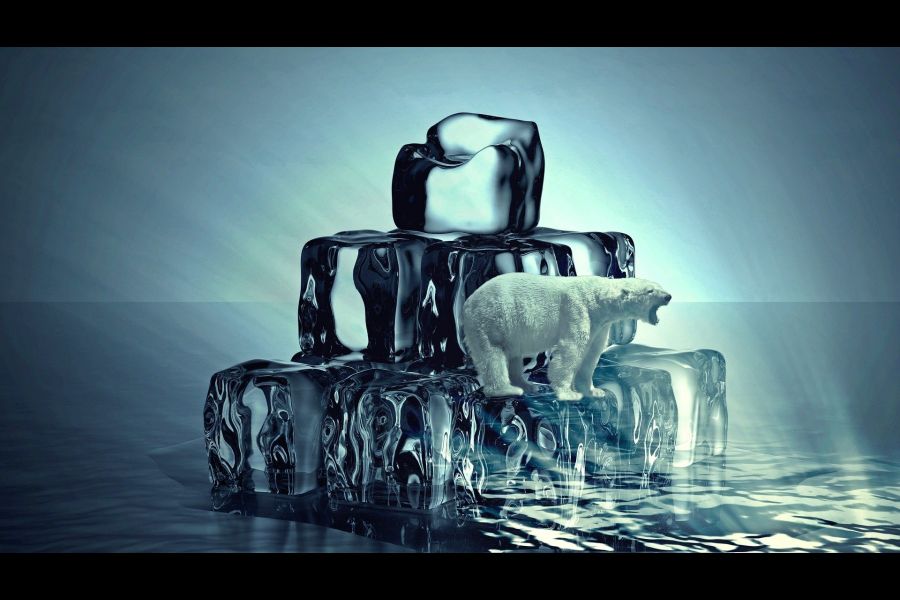This year’s Nobel Prize in physics represents a timely change. No black holes, gravitational waves or birth of the universe, no laser tweezers and no new particles accompanied by inflationary claims that without this or that particle – there would be no universe and no life.
The physics award this year wasn’t quite so apocalyptic as the particle hype, but the tone struck by climate scientists in documents they prepared for the United Nations in the runup to the U.N. Summit on Climate later this month in Glasgow, was worrisome, and even ominous.
The evidence is clear. Climate experts agree. Human-created climate change poses a clear and present danger to life on what Carl Sagan so famously once called, our beautiful pale blue dot. Unless we put the brakes on our consumption of fossil fuels and sources of greenhouse gasses, the livelihood and survival of humanity and countless other species will be in serious jeopardy within this century and, for sure, the next.
The Nobel committee made a statement this year in choosing three scientists whose work laid a solid foundation for climate science. In the words of the Nobel committee, this year’s prize in physics was awarded with one half jointly to Syukuro Manabe and Klaus Hasselmann “for the physical modelling of Earth’s climate, quantifying variability and reliably predicting global warming” and the other half to Giorgio Parisi “for the discovery of the interplay of disorder and fluctuations in physical systems from atomic to planetary scales to climate”.
Climate science is on solid ground despite vocal and often politically charged climate-change deniers. Despite the fact that climate has so many variables and moving parts, Manabe and Hasselmann developed some of the earliest reliable models for longitudinally assessing trends in climate change.
It was precisely because of those many variables and apparent chaos, that Parisi’s work was so important – because he showed how highly complex systems such as climate can be meaningfully assessed.
In the popular information piece that accompanied their summary of Manabe’s and Hasselmann’s contributions, the Nobel committee summarized the value of modelling climate change and then finished by asking four questions. To quote the committee’s report:
“Climate models have become increasingly refined as the processes included in the climate’s complicated interactions are mapped more thoroughly, not least through satellite measurements and weather observations. The models clearly show an accelerating greenhouse effect; since the mid-19th century, the levels of carbon dioxide in the atmosphere have increased by 40 per cent. Earth’s atmosphere has not contained this much carbon dioxide for hundreds of thousands of years. Accordingly, temperature measurements show that the world has heated by 1C over the past 150 years.”
“Syukuro Manabe and Klaus Hasselmann have contributed to the greatest benefit for humankind, in the spirit of Alfred Nobel, by providing a solid physical foundation for our knowledge of Earth’s climate. We can no longer say that we did not know – the climate models are unequivocal.”
This was followed by four key questions and answers posed by the Nobel summary.
Is Earth heating up? Yes
Is the cause the increased amounts of greenhouse gases in the atmosphere? Yes
Can this be explained solely by natural factors? No
Are humanity’s emissions the reason for the increasing temperature? Yes.
There you have it from no less than the Nobel committee – one of the most respected and conservative bodies in all of science. They didn’t mince words. The evidence for climate change is real and based on solid science. It cannot have been chance that the Nobel nominating committee chose to highlight climate change this year.
The Nobel series at the Niagara-on-the-Lake library begins on Nov. 8 at 11 a.m. by Zoom. However tired we might be with Zoom these days, it worked well with this series last year.
Before the presentations you might want to look up the summaries for each of the Nobel prizes on nobelprize.org, which provides a lot of information about the present and past prizes.
It also has details about each prize in the form of a news release, a summary for the public and the full scientific summary.
Hope to see you on Nov. 8. At least we won’t be talking about COVID.
Dr. William Brown is a professor of neurology at McMaster University and co-founder of the InfoHealth series at the Niagara-on-the-Lake Public Library.










